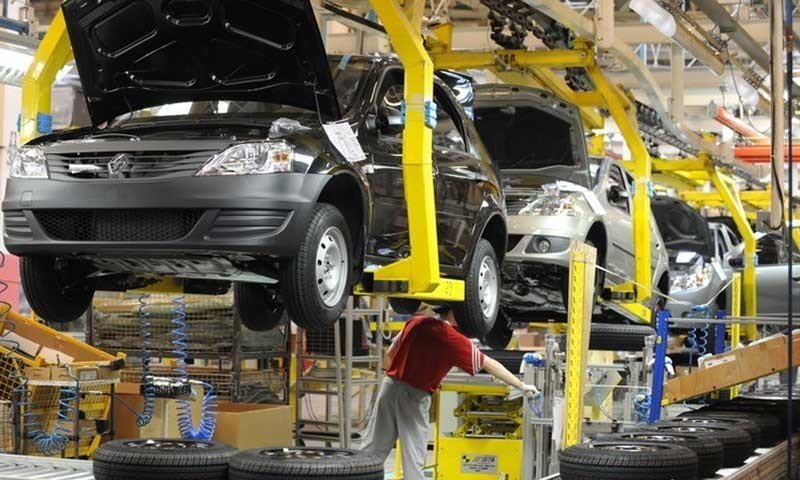Engineering Post Report
Except for sluggishness in some areas in cases of Buses and Two/Three Wheelers, there has been robust growth in all automobile sectors during the period of July 2021 -March 2022.
The higher growth effectively manifested clearing up of the pent up demand of COVID-19 period, otherwise negativity or stagnation in growth was persisting for the last about five years.
During the year under report here, there had been persistent supply chain interruptions due to Chip shortages, skyrocketing freight costs, unrelenting rupee weakening, galloping inflation and auto financing restriction on high-end vehicles to reduce the import bill of the country. Further, the earlier reduced taxes at the time of Federal Budget 2021-22 were recovered in the subsequent mini-budget thus frustrating the possible impetus to growth .
New Auto Industry Development and Export Policy 2021-26 has since been announced. Besides Made in Pakistan notion, in the new auto policy, inter-alia, Meri Gari Scheme (My Vehicle Scheme), New Product Policy and setting up of export targets have been introduced. All these measures are , according to the experts, are indeed quite encouraging and it was expected that these initiatives would soon see the light of the day. However, in the forthcoming outlook the demand was feared to weaken, as disposable incomes would decline due to higher inflation, and higher exchange rates and increasing interest rates, amongst other factors.
The august performance observed in the automobile sector during the period of July-March FY2022 was due to the latent demand for motor vehicles that showed about 50 per cent plus growth. Also in the in the heavy commercial vehicles, there was substantial growth in the trucks as the medium size trucks, around 5 tons, unexpectedly became popular due to their affordability and expansion of e-commerce. Additionally, number of small trucks signed up at a reduced rate of 5 per cent in response to Kamyab Jawan Scheme. More market expansion was expected owing to inbuilt confidence by the current investors as well as the new entrants in bringing locally produced hybrid vehicles. Therefore, all projections casted a positive outlook for the industry.
In case of passenger cars, the production and sales were up by 57 per cent and 54 per cent with 166768 and 172612 units respectively. In this regard, higher growth was observed in up to 800cc and up to 1000cc segments registering 77 per cent and 65 per cent growth respectively. Growth in exceeding 1000cc segment was 35 per cent. For similar reasons, he production and the sales of light commercial vehicles (LCV) and SUVs registered increase by 44 per cent and 46 per cent respectively. in the SUV and SUV Crossover segment two new products appeared from Beijing Automotive Industry, BAIC BJ40L and BAIC X25 with modest numbers which were expected to grow in time.
Farm tractor sector showed growth with production of and the sales up by 13.5 per cent and 12 per cent respectively. This pleasant upward surge was due to overall growth in the agriculture sector ensuring better crop prices and consequently more buying power of the farmers. However, these numbers were somehow not even close to the highest numbers this industry had achieved in the past.
The two/three wheelers sector showed modest fall in production and the sales by 3.5 per cent and 4.1 per cent respectively. This fall was due to intra-industry production losses by some units, while other units had showed their growth. Two/three wheelers offer most economical transport alternate for the lower income group, however, at the same time, it was extremely prices sensitive also.
Massive exchange rate losses kicked off inflationary conditions resulting in inevitable price increase. Still, this sector offered most preferred means of transport of transport and the best alternative in the absence of public transport in the cities and thus held a dependable and continued potential for growth in the coming years, the experts opined.
The auto sector constituted about15 per cent of Large Scale Manufacturing (LSM) hence represented significant industrial output of the country. According to the Pakistan Bureau of Statistics (PB), automobile recorded 54.1 per cent upsurge during the period under report. Despite robust growth during 9 months of FY2022, the highest numbers ,to a great extent, fell short of installed capacities. Also these numbers were far too meagre against production projections made in the 4espective auto policies. Long term policies attracting new player did indeed expanded the market with new makes and models but volumes di not go across critical level that warranted broad-based localization and import substitution .
Auto industry was heavily invested during last four decades to establish engineering base in the country and had undertaken innumerable transfer technology agreements. All these hold a bright future for so far the best performing auto sector among the large-scale manufacturing.
Given the continued government support and removal of irritants would soon going to bear fruit in the wake of industrial expansion as many new investors have already gone into commercial production while the existing players have already made huge investments and lot more were in waiting. These investments by the new and the existing players was testimony to confidence in our market, at home and abroad. Given the macroeconomic stability in the country and the extraneous factor not to go out of hand, particularly in terms of unwanted tariffs and untoward policies, the latest demand would hopefully burst out and expansion of the industry volumes would surely and certainly take place, the experts opined.








